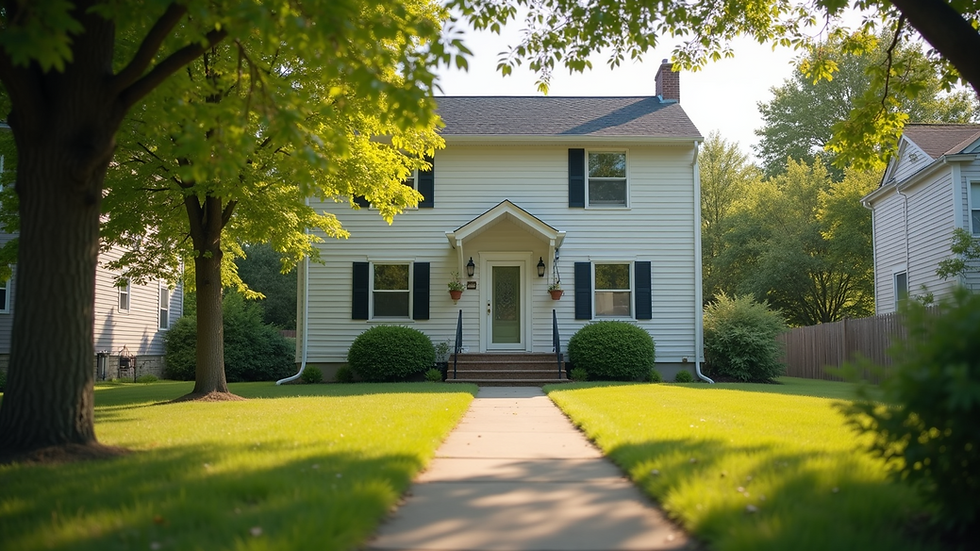How to Customize a Lease Agreement Without Breaking the Law
- domodomu
- May 19
- 4 min read
Creating a lease agreement is a crucial step in the rental process for both landlords and tenants. A well-drafted lease not only provides clarity but also protects the interests of both parties involved. Sometimes you may feel the need to customize a standard lease agreement to better suit your specific needs or circumstances. However, customization must comply with legal standards to avoid issues in the future.
This blog post will provide you with practical tips on how to customize a lease agreement legally while still ensuring it meets your requirements.
Understanding the Basics of a Lease Agreement
A lease agreement is a legal contract that outlines the terms under which a tenant can occupy a landlord's property. It typically includes details such as rent amount, lease duration, security deposit, maintenance responsibilities, and rights for both parties.
Understanding these basics is essential before considering any customization. Familiarize yourself with the standard components, especially those dictated by state laws. For example, some states may limit security deposits to one month's rent. Always ensure that your customized lease adheres to local regulations to maintain its legality.
Research Local Laws and Regulations
Before making any modifications, research the local laws governing lease agreements in your area. Each state has its own landlord-tenant laws that may mandate terms and conditions that cannot be altered.
For instance, in California, landlords must provide a notice of rent increase at least 30 days in advance for rents below $1,000 and 90 days if above that threshold. Understanding these laws can help identify areas for customization while ensuring your lease remains legally sound. Always consult a legal expert if you're uncertain about specific clauses or legal jargon.
Identify Areas for Customization
Once you understand standard lease components and local laws, pinpoint areas that may benefit from customization. Common areas include:
Rent Payment Terms: Adjust payment due dates or methods. For example, consider allowing tenants to pay rent online, which could increase timely payments.
Lease Duration: While many leases are one year, consider shorter or longer terms depending on local demand. Statistics indicate that 30% of renters prefer shorter lease durations for flexibility.
Other areas may involve security deposit amounts, maintenance responsibilities, and pet policies.
When making changes, ensure that all modifications are agreed upon and documented in writing to avoid misunderstandings.
Use Clear and Concise Language
When customizing a lease agreement, clarity is key. Legal jargon can cause confusion, making it hard for either party to understand their rights and obligations.
Use straightforward language that conveys the intended meaning. For example, instead of saying, "the tenant shall not engage in activities that disturb neighbors," say, "the tenant agrees not to play loud music past 10 PM." Clear terms help prevent disputes and ensure that both parties understand the agreement.
Outline Consequences for Violations
Defining the consequences of violating lease terms is another important customization aspect. Including clear repercussions helps both parties understand expectations and potential outcomes.
For example, state that failure to pay rent on time incurs a late fee of 5% of the overdue amount. Or, clarify that breaking the pet policy could result in lease termination. These provisions protect both parties and ensure awareness of responsibilities.
Include Additional Clauses Relevant to Your Situation
Depending on your unique situation, consider including additional clauses in the lease agreement. This may involve details about:
Emergency Repairs: Outline how repairs will be managed during emergencies and provide contact numbers for service providers.
Right of Entry: Specify when the landlord can enter the property, for example, for inspections requiring 24 hours' notice.
Incorporating these additional clauses tailors the lease to your needs while complying with legal requirements.
Maintain Professionalism in Tone
Despite any customization, always keep a professional tone in the lease agreement. While casual language or personal anecdotes may seem inviting, remember that this document is a legal contract.
A professionally presented agreement fosters a serious tone and respect between parties, reducing the likelihood of disputes.
Seek Legal Advice
Even with well-researched content, navigating the complexities of lease agreements and local laws can be tough.
Consulting with a legal professional specializing in leases ensures your customized agreement complies with all relevant legislation. They can provide valuable insights and help draft a comprehensive contract that meets your needs while safeguarding your rights.
Keep Clear Records of Amendments
If you modify a lease agreement, maintaining records of any changes is essential. Even small tweaks can have significant legal implications.
Keep a copy of each lease version, including any signed amendments. Make sure both the landlord and tenant receive an updated lease agreement that clearly outlines all terms.
Use Templates as a Starting Point
If you are unsure where to begin, consider using a lease agreement template as a foundation. Numerous free and paid templates are available online, offering solid frameworks.
However, be sure to tailor the template to meet your unique requirements and ensure compliance with local laws. Customization is essential—even the best template needs your specific touch.
Creating a Customized Lease
Customizing a lease agreement can effectively meet the specific needs of landlords and tenants. However, it’s crucial to do so lawfully.
By understanding core components, reviewing local regulations, using clear language, and seeking legal advice when necessary, you can create a customized lease agreement that protects both parties' rights and responsibilities. Take the time to craft a thorough document—it's an investment in a smooth rental experience.

Navigating the journey of customizing your lease agreement can establish a solid foundation for your landlord-tenant relationship. Keep these tips in mind, and you'll navigate the process smoothly, avoiding legal pitfalls along the way!




Comments